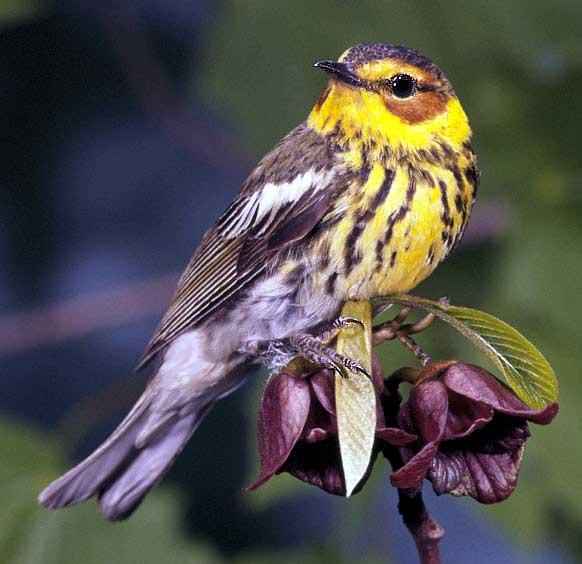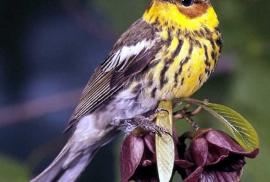Guide to Boreal Birds
Overview
This warbler gets its name from the fact that the first specimen was collected at Cape May, New Jersey, where it is sometimes a common migrant. During the brief summer breeding season, Cape May warblers are patchily distributed in forest of spruce, fir or jack pine conifers. The Cape May Warbler is perhaps best known among ornithologists as a spruce budworm specialist. Its populations expand during outbreaks of the defoliating spruce budworm, reaching high densities in such areas and then sometimes disappearing between outbreaks. Its larger than average clutch size may enable it to increase rapidly during such short-term resource bonanzas. Populations have been declining since the late 1970s. The most likely explanation is that the population is responding to declining numbers of spruce budworms in eastern Canada (although outbreaks continue in western Canada). As logging continues throughout the boreal forest, the loss of mature forest may contribute to long-term declines as insects won‚t break out without suitable forests to feed on, and present forestry levels don‚t appear to be sustainable over the long term.
Description
5" (13 cm). In breeding plumage, male yellow below with conspicuous chestnut cheek patch; yellow neck patch; white wing patch; yellow rump; heavy black streaks on underparts. Female much duller, with greenish-yellow patch on neck.
Voice
Song is 4 or more high thin notes without change in pitch or volume, seet-seet-seet-seet.
Nesting
4 brown-spotted white eggs in a bulky, compact, twig-and-moss nest lined with grass, fur, and feathers.
Habitat
Open spruce forests; during migration, evergreen or deciduous woodlands and often parks or suburban yards.
Range/Migration
Breeds from southern Mackenzie, Manitoba, Ontario, and Quebec south to North Dakota, Michigan, northern New York, Maine, and Nova Scotia. Winters in southern Florida and West Indies.



